How to automate Shopify metafields
Are you looking for a way to extend the functionality of your online store and connect extra information to more content types in Shopify? If so, automate Shopify metafields to almost anything in Shopify and enhance your scaling processes.
Meta fields allow Shopify teams to track and store additional data related to products, customers, orders, and more. They can reduce headaches by manually inputting all the information on a given product or variants by making it available through a simple switch in your themes Liquid code.
By following these instructions, you’ll learn how to set up automated metafields across your themes so that you can save time while gaining additional information into your operations.
Ready to save time by automating metafields? Get MESA for free and easily manage custom fields in workflows throughout your business.
Topics:
How to add metafields in Shopify
In the Shopify Admin, you can create and edit metafields, allowing you to add custom content to shop objects such as products, customers, collections, images, blogs, and more.
For advanced applications, the API for managing metafields is available – however, at certain scale points it may be worthwhile to consider third-party apps specific to your business needs.
Accessing and editing metafields through Shopify Admin
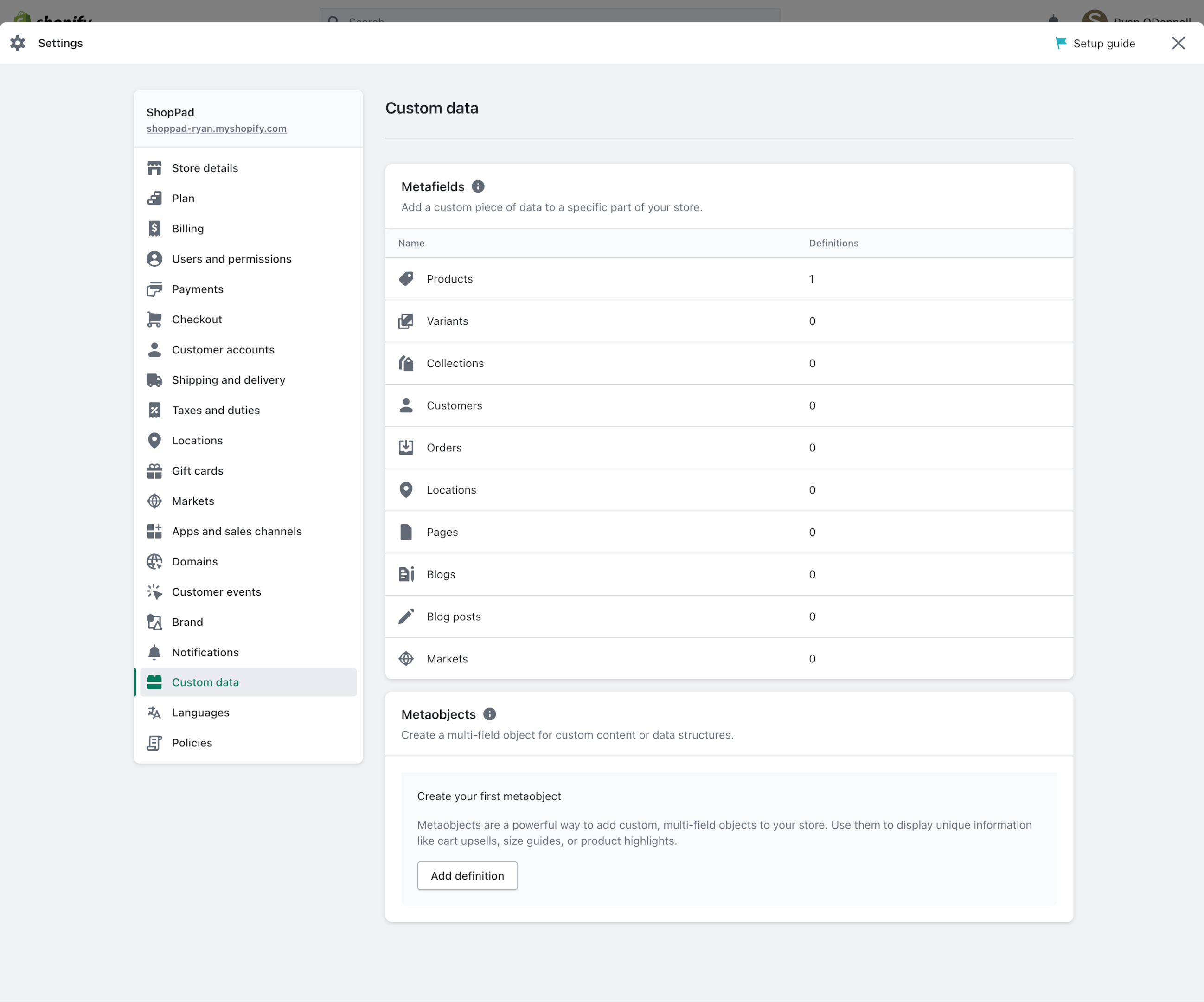
From your admin, navigate to Settings, scroll to find “Custom data” from the side naviagtion then you’ll see the metafields section. From here you can add metafields, edit any metafield value, and delete other metafields that are no longer needed.
Using the Shopify Metafield API
The Shopify Metafield API provides the tools to programmatically create, update, and delete metafields. It is a powerful method for applications with large amounts of data that need to be organized quickly and efficiently.
The API can be used to create custom scripts or integrations to automate tasks related to metafields, such as using metafield values, populating the product description with metafield data or creating custom customer segments based on metafields.
Utilizing third-party apps for managing metafields
For more complex logic, there are a variety of third-party apps available that provide a more comprehensive solution for managing metafields. These tools can manage significant amounts of data quickly and easily, enabling ecommerce teams to concentrate on other tasks related to their store.
Metafields Bulk Edit
Unfortunately, there is no way to bulk edit metafields from the Shopify admin. The only way is to find and use a 3rd-party app or do so through the Metafields API. Your only other method would be to manually edit the metafield data associated with each object manually. While possible, it’s very tedious and time consuming. We recommend automating this process instead.
Import and Export Metafields
Again, importing and exporting metafields from the Shopify admin is not possible. You’ll need a 3rd-party metafields app or a simple workflow to do this automatically.
How to automate Shopify metafields
Automating metafields in Shopify is an invaluable way for e-commerce managers to streamline their workflow operations. Fortunately, there are a variety of Shopify metafield apps and techniques available for quickly managing these custom fields.
Therefore, it’s crucial to thoroughly research the capabilities of each app before selecting one. When selecting the right automation app for your business goals, you should consider features such as customer support, comprehensive design templating, and easily extensible snippets for themes.
When selecting an automation app for your metafields, there are a few things to keep in mind.
Research the features available – make sure that the app has all of the features you need and that it is compatible with your existing themes (if applicable).
Consider scalability – will the app be able to handle large quantities of data in order to meet your growing needs?
Ask questions – contact the vendor and ask any questions you may have regarding features, pricing, scalability, etc. Be sure they have good support coverage.
Check reviews – look at what other users are saying about the app before making a decision.
By researching and selecting the right metafield automation app, you can ensure that your new workflow runs more efficiently; adding values to the right fields.
Product metafields
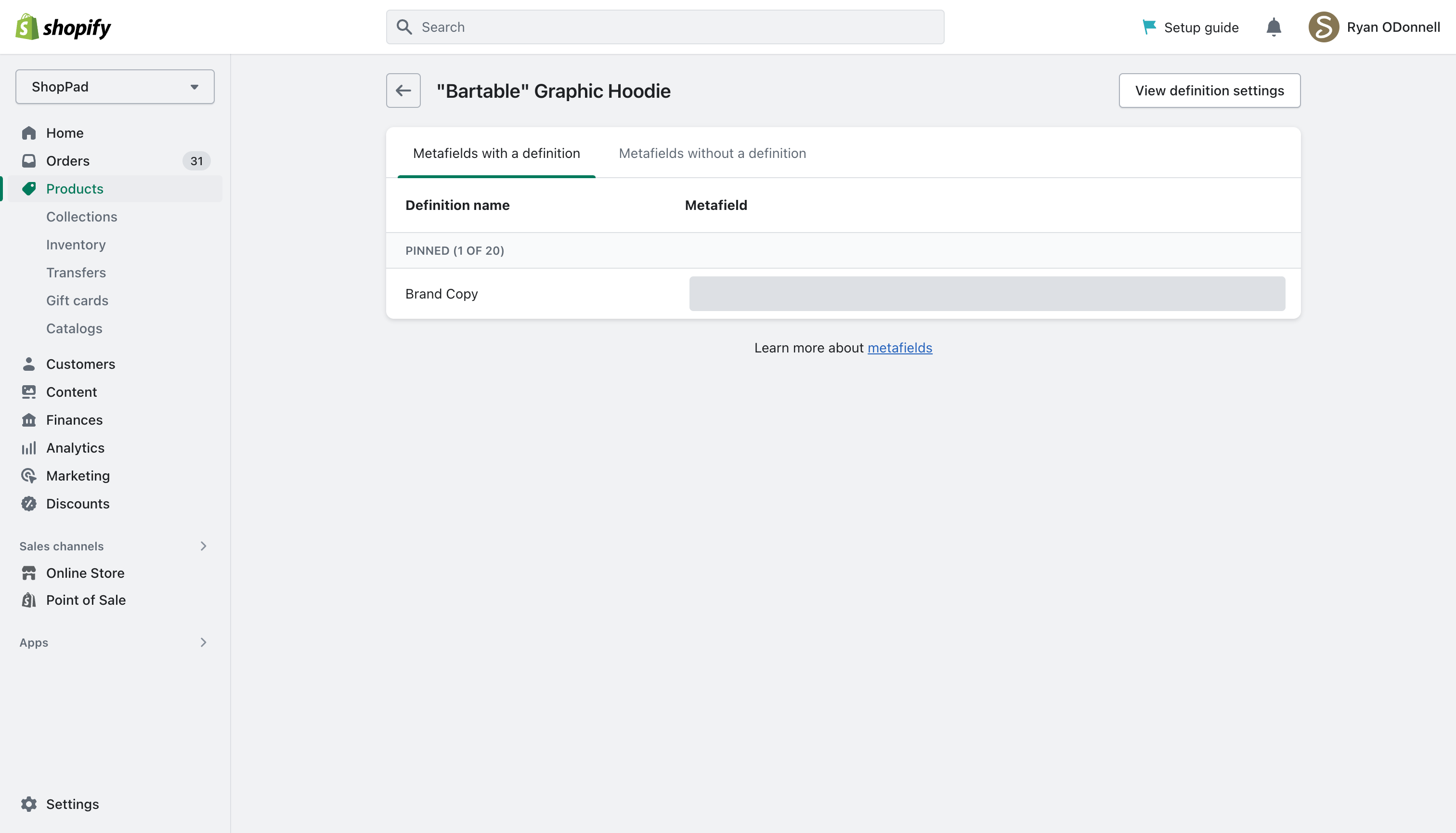
By automating product metafields, you can significantly improve the operations of your online business.
Let’s start with editing. By bulk editing and updating multiple products, managers can quickly and efficiently streamline product tagging and categorization. You can even us the AI to help generate your product tags with minimal effort.
MESA Template ID
use-ai-by-mesa-to-generate-shopify-product-tags
By automating your product metafield tagging and collections, you can free up valuable time for store managers to tackle more pressing tasks. This innovative solution streamlines the entire process, making manual updates a thing of the past. As a result, your team can better allocate resources and devote energy to create better customer experiences and driving sales.
You can also improve how you import and export data, automating the entire process. It all starts with these easy to use template!
MESA Template ID
tag-a-product-with-a-metafield-value
Variant metafields
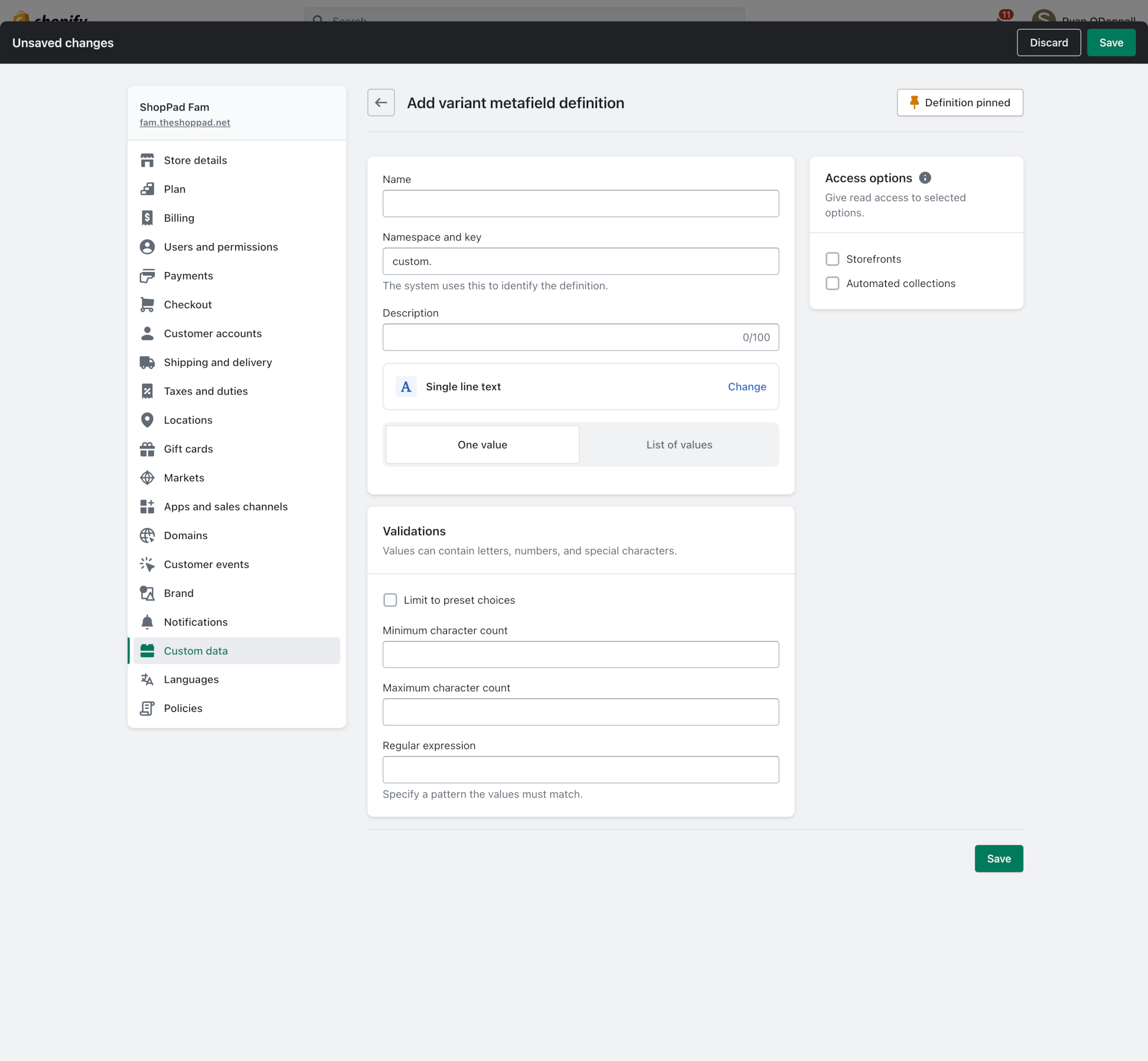
For Shopify users, automating the process of managing variants can be a daunting task.
Fortunately, with the right workflow in place, this process can be made much simpler. By taking advantage of metafields, inventory tracking, and product options can be easily managed — ensuring that all products are updated quickly and efficiently.
Enhancing variant organization and presentation is also possible. By using metafields, variant selection menus can be customized to suit your store’s exact needs. Furthermore, with the right automation tools in place, you can easily create rules for updating and managing variant information as needed. This makes tracking changes and keeping all products up-to-date effortless.
Customer metafields
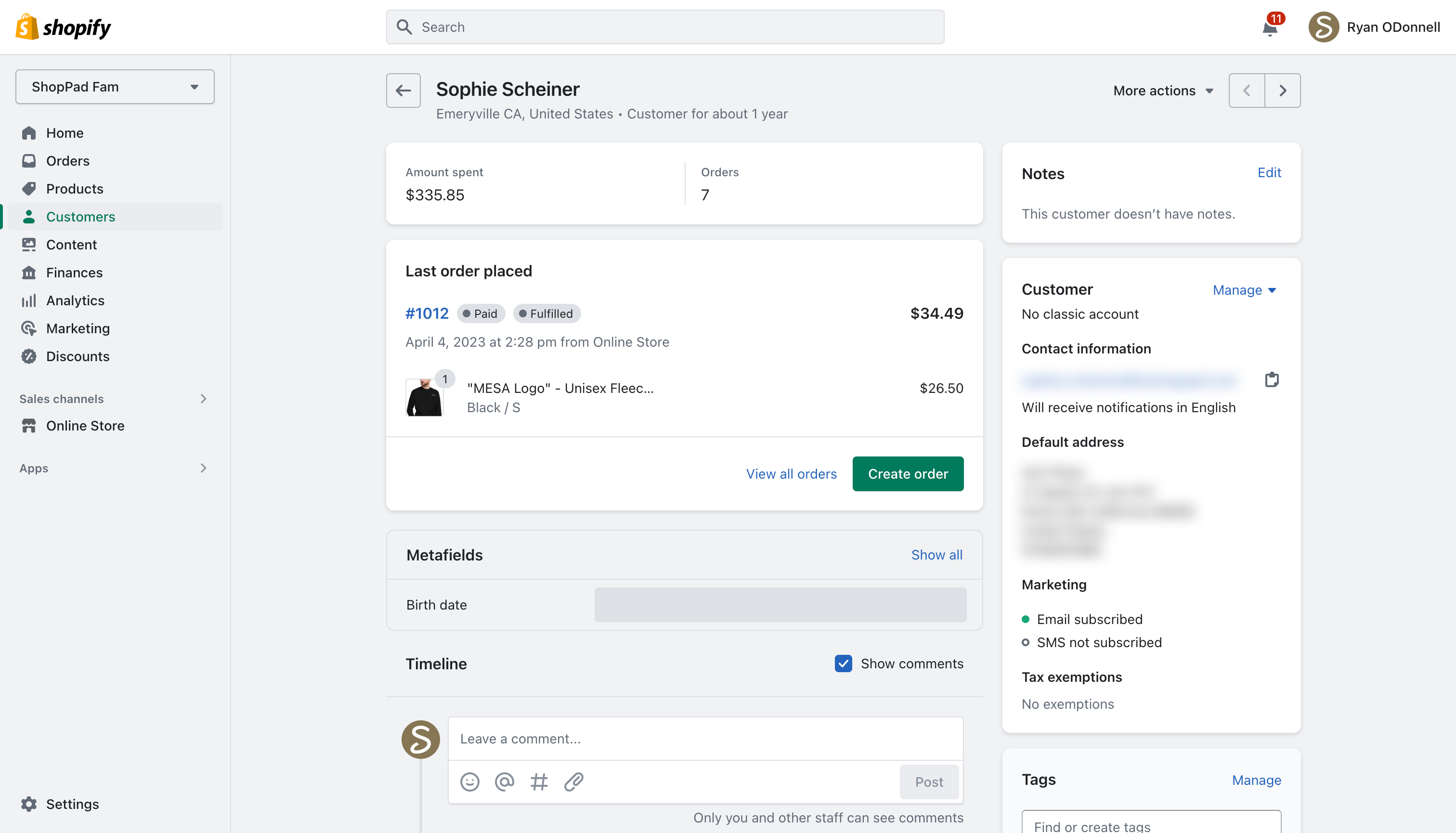
Automatizing customer and order metafields can save your business time and money while also providing you with greater control over your customer experience.
Through the application of appropriate metafields, you can capture more data from customers when they interact with any part of your store, customize the entire order process from start to finish, and even automate fulfillment for certain orders – all without any coding knowledge.
Implementing this system may seem daunting at first but once you know the basics, automating Shopify metafields will become an invaluable asset for your online store.
Order metafields
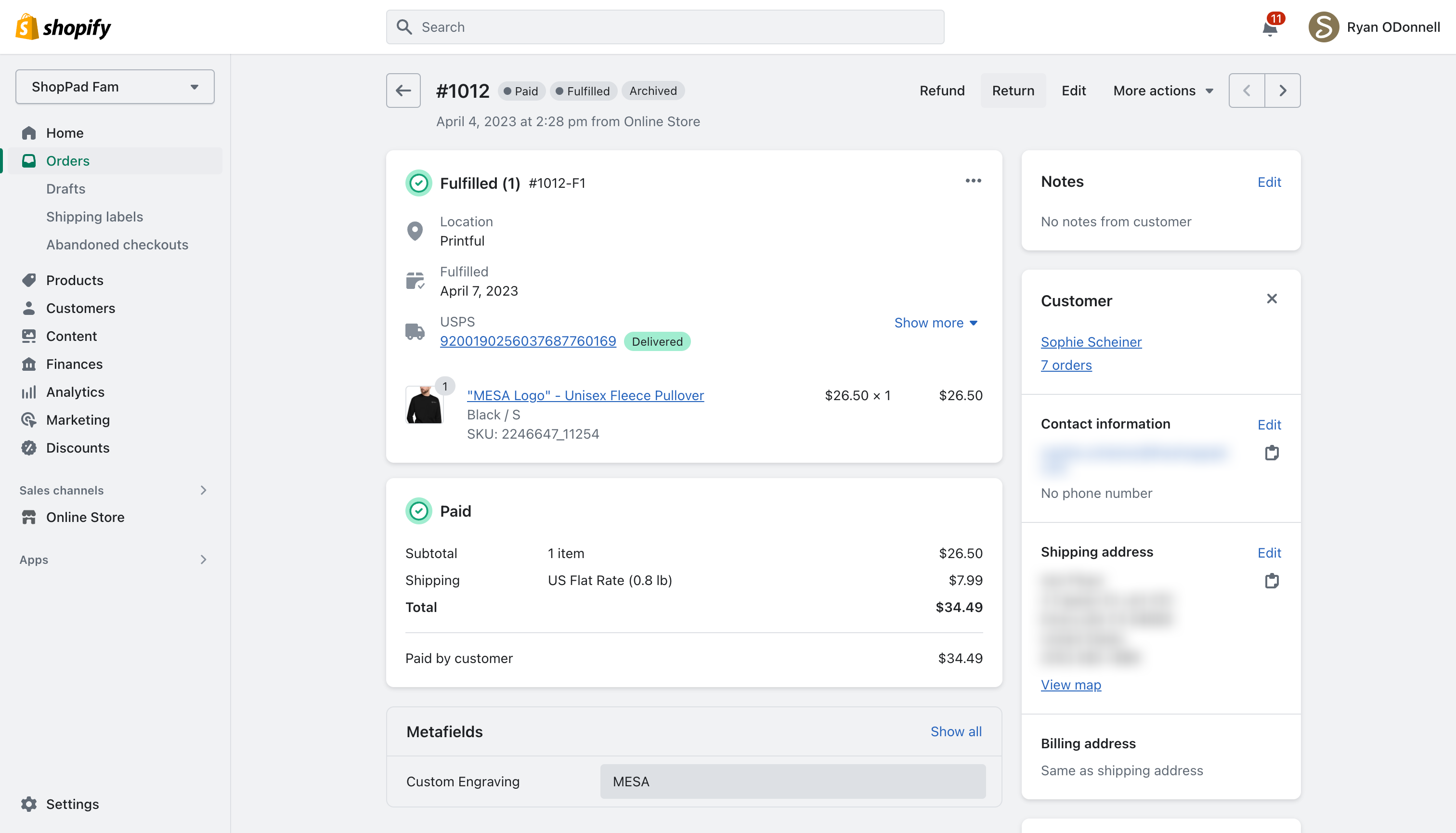
One example of using and automating Shopify order metafields is to capture personalized product options, such as custom engravings or monogramming. As a result, you can save this custom information directly within each order, making it easily accessible for both the fulfillment team and customer service representatives. Automating the process ensures that these personalized details are consistently and accurately applied to the relevant orders, leading to fewer errors and increased customer satisfaction.
MESA Template ID
add-customer-metafields-to-shopify-order-notes
Another example is the automation of order-specific shipping requirements or delivery instructions. You can use a metafield to capture special handling instructions, such as “fragile” or “perishable,” or to record unique delivery details, like a gate code or specific drop-off location. Automating this information within the order metafields helps ensure that shipping providers receive the necessary instructions, reducing the likelihood of delivery issues and enhancing the overall customer experience.
Metafields for SEO optimization
Knowing how to leverage the power of Shopify’s metafields for search and SEO optimization is a huge advantage for any ecommerce manager.
Automating metafields can help you save time and effort by organizing, standardizing, and optimizing your search efforts in two steps. Firstly, add SEO-friendly data as a default value for all products. Secondly, unifying the data format used across multiple stores or products.
By automating the process, you can ensure that all new product information matches closely with the corresponding SEO profile of your store, helping you stay ahead of competitors and drive higher organic search rankings.
Here are three things to know about automating metafield for SEO optimization.
Generate meta descriptions and keywords: it’s crucial you index the site properly. Single line text metafields are handy in systematically generating meta descriptions and keywords, ensuring that every product is accurately represented. This not only allows you to control the information going out but also helps your product information stay up-to-date without any hassle.
Enhancing site structure and navigation: Harness the power of metafields to streamline your website’s organization and structure. With this tool, you can craft a seamless navigation system that effortlessly guides customers to their desired products.
Improving search engine visibility: By organizing your data and content in a structured, search engine-friendly way, you can increase your chances of ranking higher in search engine results pages (SERPs). The result? A flood of organic, interested traffic that is more likely to convert into sales. Let metafields do the heavy lifting so you can focus on growing your business.
Best practices for automating metafields in Shopify
Metafields are incredibly versatile tools that can add a wealth of data to quickly automate processes with Shopify. An understanding of best practices and the potential benefits can help ecommerce managers create an effective metafield automation strategy.
Gaining in-depth knowledge about adding, editing, and deleting metafields is a great start, but beyond this, it is also important to consider using them for inventory and customer tracking, order automation, product grouping, and analytics.
Here are three best practice tips that you should be aware of.
Ensuring data consistency and accuracy: When automating metafields, ensure the data is consistent across all stores and products. This will help reduce manual errors and keep customers informed about product updates.
Prioritizing data security and privacy: Automating metafields can help you store and manage sensitive customer information in a secure way. Storing all data securely and encrypting it is crucial to prevent potential privacy or security breaches.
Regularly reviewing and updating metafield automation processes: Although Metafields can be incredibly powerful tools, you must review and update them regularly to ensure they remain relevant and up-to-date. This will help you save time and energy while keeping customers informed about product changes.
Taking these steps may take some time and effort up front, for example, but the long-term gains in efficiency and effectiveness make it well worth it.
Final thoughts
Metafields are a powerful tool for ecommerce managers who use Shopify, allowing much greater flexibility than conventional content management systems.
They enable you to save extra data associated with Shopify objects, allowing you to perform various tasks such as batch-updating product information, adding custom fields, or manipulating customer segmentation.
Although configuring metafields in this way requires an understanding of a certain degree of coding, automating these features is achievable through careful planning, straightforward exploration of available resources, and getting creative with the various functions available on Shopify.
With the right approach and access to the right information – such as that included in this blog post – even those unfamiliar with coding can efficiently automate their metafields.


